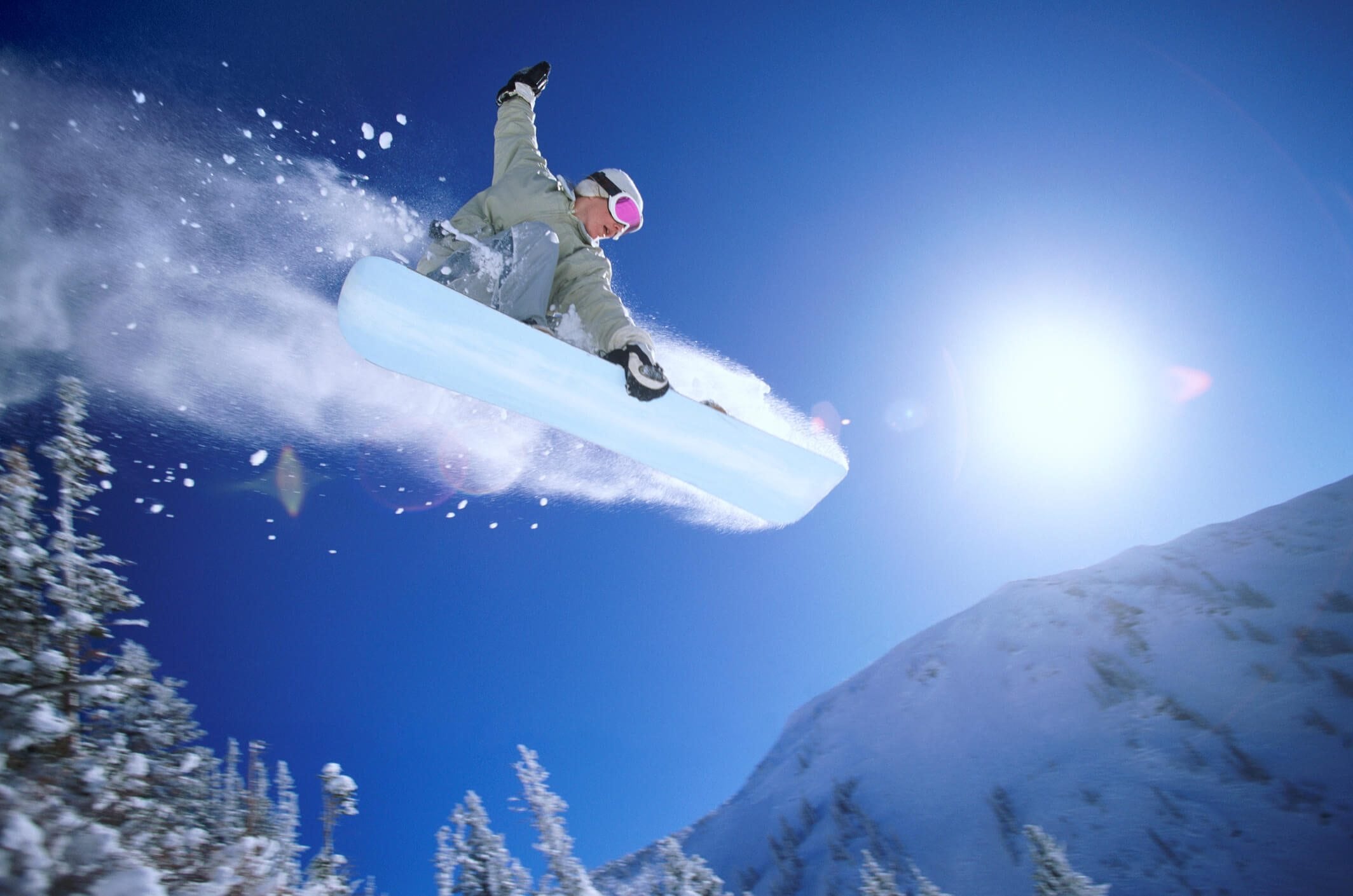By Kevin Hunt
The medal count at the PyeongChang Winter Olympics begins this weekend. So does the injury count.
At the 2014 Sochi Winter Games, medical staff reported 391 injuries among the 2,780 athletes from 88 countries. That’s more injuries than medals (294). The 14 percent injury rate — 14 injuries for every 100 athletes — was comparable to the previous Winter Games in Vancouver (11.2 percent).
The most dangerous sports:
- Aerial skiing.
- Snowboard slopestyle.
- Snowboard halfpipe.
- Snowboard cross.
- Slopestyle skiing.
- Halfpipe skiing.
- Moguls skiiing.
- Alpine skiing.
With more athletes going faster and soaring higher, expect more severe injuries in the Winter Games than in a typical Summer Games. How dangerous does it get? Half the women who competed in slopestyle, a new sport that requires freestyle snowboarding or skiing on a sloping course with sliding rails and jump ramps, were injured in the Sochi Games.
New Englanders, or course, know both the joys and risks of snowboarding and skiing.
“Since the development of terrain parks at nearly every major resort we have seen progressively larger jumps, bigger half-pipes and more challenging features, including various types of rails and boxes,” says Dr. J. Kristopher Ware, an orthopedic surgeon and sports medicine specialist at the Hartford HealthCare Bone & Joint Institute who’s also a recreational snowboarder. “This has really added a new level of technical skill for skiers and riders, but we are also seeing the injuries associated with higher-risk events. This winter alone I have treated a large number of knee ligament injuries in skiers and shoulder injuries in both skiers and snowboarders.”
Here’s rundown of some common winter-sport injuries:
Skiing
Thumb: A ligament tear, usually caused during a fall when the ski pole bends the thumb awkwardly. A ligament is the soft tissue that stabilizes the thumb on each side. The radial collateral ligament, or RCL, is on the outer part of the thumb. The ulnar collateral ligament, or UCL, is on the index-finger side. An injury to the UCL is so common that it’s known as “Skier’s Thumb.”
How to avoid Skier’s Thumb:
- Release the pole as you fall.
- Never place your hands through the pole’s strap. Grip the strap next to the pole.
- Don’t brace your fall with your hand.
“Partial tears can often be treated conservatively with splinting to reduce strain on the ligament while it heals,” says Dr. Ware. “On the other hand, complete ligament tears often require surgical repair of the ligament to stabilize the joint. The decision is based on clinical examination of the ligament laxity and in some cases an MRI is used to assist in determining the degree of injury.”
Knee: Leg fractures have dropped 90 percent the past three decades because of releasable bindings, but knee injuries have become prevalent.
Anterior Cruciate Ligament (ACL) rupture: The ACL is one of the knee’s four major ligaments. It keeps the bones aligned and controls knee movement. This injury usually happens with the skier leaning back, then catching an edge, twisting the knee. If you feel or hear a pop, it’s likely an ACL injury. Swelling may take weeks to diminish. Some tears require surgery.
“ACL injuries can be devastating to those passionate about skiing,” says Dr. Ware. “This is the most common skiing-related injury I see in my practice. We are continually looking for the best ways of ACL injury prevention.”
Medial Collateral Ligament (MCL) tear: The most common ski-related knee injury, usually treated without surgery. The MCL, at the inner side of the knee, adds stability to the area. MCL tears can happen if you’re in the snowplow position, with ski tips pointed inward, and you fall down the slope. It’s more likely to happen to a novice or intermediate skiers.
“As you mentioned, one common mechanism of injury occurs when the skier’s center of gravity shifts backward as the knees flex followed by catching the inside ski edge,” says Dr. Ware. “In the high level athlete, this frequently occurs as a result of back-weighted landing from a jump. One method for prevention is simply training to land with your weight forward and practicing to avoid leaning back in the event of a fall.”
Dr. Ware, who also has a doctorate in physical therapy, recommends preseason preparation to reduce the risk of injury for athletes of all skill levels.
“This involves training the core, emphasizing balance, and identifying and addressing strength deficits,” he says. “Skiers often have much stronger quadriceps compared to hamstrings. The hamstrings can help stabilize the knee and reduce strain on the ACL, and therefore, part of preseason training needs to involve targeted strengthening for these muscles.”
Shoulder Dislocation: A fall, either directly on the shoulder or braced by an outstretched hand, can cause the bone in your upper arm to pop out of the socket at the shoulder blade. (A shoulder separation affects the AC joint.) Once the shoulder is placed back into the joint by a specialist, the arm will be placed in a sling for about three weeks followed by a physical therapy program that includes strengthening exercises.
“The two questions I get most commonly,” says Dr. Ware, “are, ‘How quickly can I get back to skiing and snowboarding?’ and, “Will my shoulder come out again?’ A first-time dislocation is not always a season-ending injury but the risk of reinjury is a major concern. The risk depends on a number of factors, the most important being age. In the athlete under 25 years old, the risk of recurrent dislocation is very high.”
Each dislocation, says Dr. Ware, risks additional damage to the shoulder’s cartilage and bone.
“As a result,” he says, “young athletes with shoulder instability following a shoulder dislocation may elect to undergo surgery to reduce their risk of recurrence. On the other hand, athletes older than 40 have a lower chance of recurrent dislocation, but they are more likely to have a rotator cuff injury that occurs at the time of dislocation.”
Dr. Kevin Burton, an orthpedic surgeon, discusses preventing and treating injuries when skiing, snowboarding and skateboarding in this appearance on “The Rob Dibble Show.”
Snowboarding
The snowboarder risks the same injuries as the skier, but it’s more of a contact sport — body colliding with another snowboarder, an object or a violent fall.
Wrist, forearm: Snowboarders, no doubt, fall more often than the average skier. When people fall, they naturally brace themselves with extended hands. This action, in fact, does brace the fall but also risks injury to the wrist. (Many snowboarders wear wrist guards for this reason.)
“The wrist is the most common area of injury for the snowboarder,” says Dr. Ware. “These injuries occur when the snowboarder catches their downhill edge and their momentum carries them forcefully onto an outstretched hand. The injury can also occur with improper landing from a jump. Wrist guards have been shown to reduce but not eliminate these injuries.”
Scaphoid fracture: The scaphoid, one of wrist’s eight small carpal bones, connects two rows of those bones — the proximal row at the forearm and distal row nearer the hand. A break can cause severe pain (later an ache at thumb side of the wrist), swelling and reduced wrist flexibility. An X-ray can reveal a scaphoid fracture. You doctor also might recommend a CT scan, bone scan or MRI.
If the bone is not out of place, the injury can be treated with a cast with a minimum six-week recovery period. Surgery, if required, might include screws or pins to stabilize the area.
Broken collarbone: A break in the clavicle (also called collarbone), the bone that extends from the front of the shoulder to the sternum (breast bone) in the middle of the chest. This can happen when the snowboarder falls directly on the shoulder or an extended arm.
Click here for more on the most common sports injuries. And learn more about sports health at MySportHealth.org.


